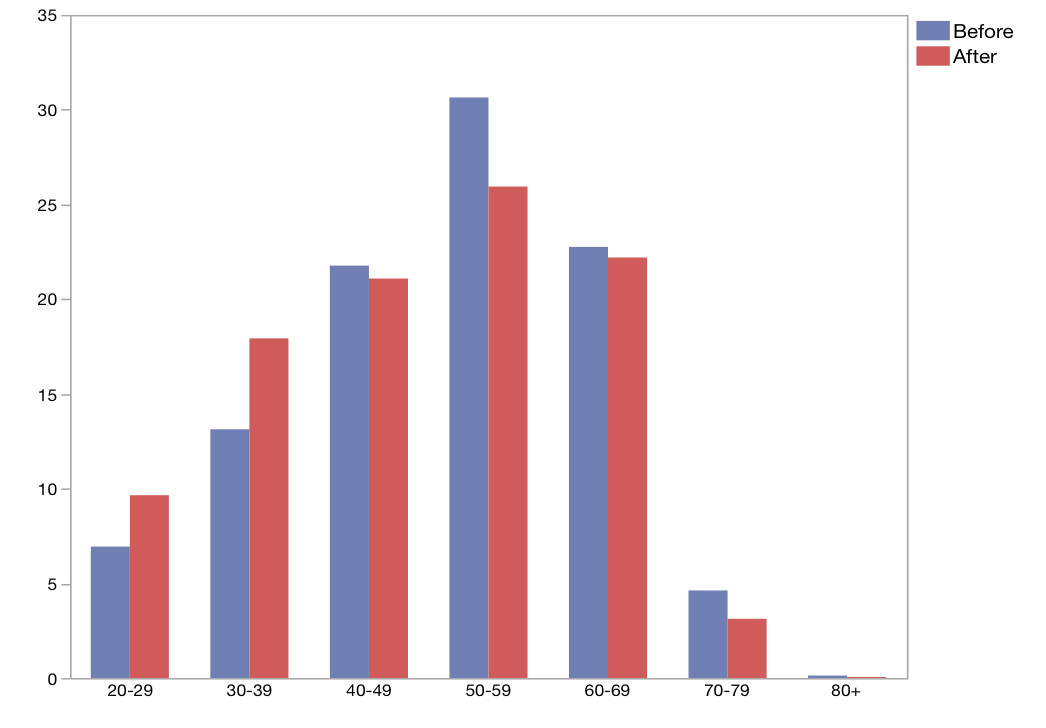Facing Unintended Challenges of Increased Risk Donor Kidneys in a New Kidney Allocation Era.
1Abdominal Organ Transplantation, University of Washington Medical Center, Sattle, WA
2Transplant Infectious Disease, University of Washington Medical Center, Sattle, WA
3Transplant Nephrology, University of Washington Medical Center, Seattle, WA
Meeting: 2017 American Transplant Congress
Abstract number: A96
Keywords: Allocation, High-risk, Infection, Kidney transplantation
Session Information
Session Name: Poster Session A: Deceased Donor Issues I: Allocation, KDPI and Recipient Selection
Session Type: Poster Session
Date: Saturday, April 29, 2017
Session Time: 5:30pm-7:30pm
 Presentation Time: 5:30pm-7:30pm
Presentation Time: 5:30pm-7:30pm
Location: Hall D1
Background: In 2014, the Organ Procurement and Transplantation Network (OPTN) approved a new kidney allocation system (KAS). One of the intended goals of this system was to allocate the top 20% of the kidneys to the younger recipients with longer life expectancy. While achieving the expected goals the new unexpected consequences arise.
Methods: Analyses of OPTN data of patients undergoing primary deceased kidney transplantation in two time periods: prior to KAS (1/2005 to 12/2014) and post KAS (12/ 2014 to 3/ 2016) was performed.
Results: A total of 115, 744 deceased kidney transplants were analyzed. The distribution of PHS high-risk kidney transplants performed in various age groups changed significantly before and after KAS implementation with increasing number of younger individuals receiving high-risk kidneys (in age group 20-29, 7% vs. 10% and in age group 30-39, 13% vs. 18% in pre- and post-KAS, respectively; p<0.0001).  Conclusion: The new KAS resulted in a substantial rise in allocation of PHS increased-risk kidneys to candidates in a younger age group. Because these kidneys are still considered suboptimal further investigation of high-risk donor organ acceptance patterns by the younger individuals in the new era of KAS is needed so that its intended goals are fully realized.
Conclusion: The new KAS resulted in a substantial rise in allocation of PHS increased-risk kidneys to candidates in a younger age group. Because these kidneys are still considered suboptimal further investigation of high-risk donor organ acceptance patterns by the younger individuals in the new era of KAS is needed so that its intended goals are fully realized.
Figure 1. Comparison of PHS high-risk kidney recipients among different age groups before and after new KAS.
CITATION INFORMATION: Rahnemai-Azar A, Perkins J, Limaye A, Leca N, Blosser C, Johnson C, Morrison S, Bakthavatsalam R, Sibulesky L. Facing Unintended Challenges of Increased Risk Donor Kidneys in a New Kidney Allocation Era. Am J Transplant. 2017;17 (suppl 3).
To cite this abstract in AMA style:
Rahnemai-Azar A, Perkins J, Limaye A, Leca N, Blosser C, Johnson C, Morrison S, Bakthavatsalam R, Sibulesky L. Facing Unintended Challenges of Increased Risk Donor Kidneys in a New Kidney Allocation Era. [abstract]. Am J Transplant. 2017; 17 (suppl 3). https://atcmeetingabstracts.com/abstract/facing-unintended-challenges-of-increased-risk-donor-kidneys-in-a-new-kidney-allocation-era/. Accessed December 29, 2025.« Back to 2017 American Transplant Congress
